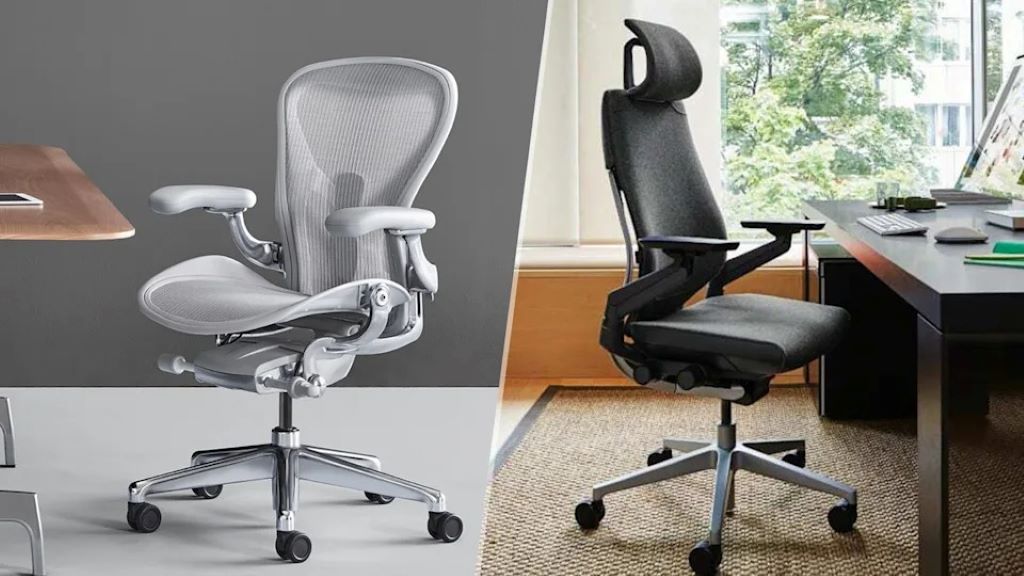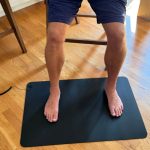My lower back sent the first signal. It was a dull, persistent ache that arrived around 3 PM every day. Soon, my neck joined the protest, stiff and sore from hours spent hunched over a keyboard. I was working from home, and my dining chair was my unforgiving throne. It was a stylish piece of wood, but it was slowly betraying me. I realized this wasn’t sustainable. My productivity was suffering, and my body was paying the price. This realization launched me on an epic quest: a journey to find the absolute best ergonomic chairs that could transform my workspace from a torture chamber into a haven of comfort and support. This wasn’t just about buying a new seat; it was about investing in my health.
The Villain in My Office Was an Old, Worn-Out Chair
Before my search began, I had to understand the enemy. My dining chair, like so many standard office chairs, was a posture-killer. It had a flat back, no armrests, and zero adjustability. I would slouch to find comfort, my spine curving into a dangerous “C” shape. This poor posture wasn’t just causing aches; it was draining my energy. My focus would wane as the discomfort grew, and I found myself taking frequent, unproductive breaks just to stretch and escape the pain. It was a vicious cycle of discomfort leading to distraction.
The problem, I discovered, is incredibly common. Millions of us spend a third of our day sitting down, often in chairs that do more harm than good. In fact, prolonged sitting in non-ergonomic chairs is linked to significant health issues. A study highlighted by the World Health Organization (WHO) connects physical inactivity, often exacerbated by poor workplace setups, to an increased risk of numerous chronic diseases. My simple wooden chair was more than just uncomfortable; it was a health hazard hiding in plain sight. It became clear that finding a truly supportive seat wasn’t a luxury—it was a necessity.
Understanding What Makes an Ergonomic Chair Truly Great
Embarking on my quest, I quickly learned that the term “ergonomic” is more than just a marketing buzzword. A truly ergonomic chair is a sophisticated tool designed to work in harmony with the human body. It isn’t a one-size-fits-all solution. Instead, its core principle is adjustability. Your body is unique, and your chair should adapt to your specific height, weight, and proportions. This prevents strain by promoting a healthy, neutral posture where your joints are naturally aligned.
So, what are the non-negotiable features? First and foremost is lumbar support. This feature supports the natural inward curve of your lower spine, preventing slouching. Next is adjustability. You should be able to change the seat height, armrest position, and seat depth. Proper seat height allows your feet to rest flat on the floor with your knees at a 90-degree angle. Adjustable armrests support your arms and take the strain off your shoulders and neck. Finally, consider the material and mobility. Breathable mesh or quality fabric prevents heat buildup, while a stable swivel base and smooth casters allow for easy movement without straining.
Key Ergonomic Features Checklist:
- Adjustable Lumbar Support: Does it fit the curve of your lower back?
- Seat Height Adjustment: Can your feet rest flat on the floor?
- Seat Depth Adjustment: Is there a 2–4 inch gap between the seat edge and the back of your knees?
- Adjustable Armrests: Do they support your forearms at a 90-degree angle to your desk?
- Backrest Recline and Tension: Can you recline comfortably without feeling like you’ll tip over?
- Quality Materials: Is the fabric breathable and durable?
- Stable Swivel Base: Does it move smoothly and feel secure?
My Top Contenders for the Ultimate Comfort Throne
After weeks of research, reading reviews, and even visiting showrooms, I narrowed the field to a few top contenders. These chairs represent different philosophies and price points, but they all excel at providing comfort and support. My goal was to find a chair that could handle an eight-hour workday without leaving me feeling stiff and sore. These models are widely considered some of the best ergonomic chairs on the market for good reason; they are engineered for human wellness.
The first chair I tested was the legendary Herman Miller Aeron. This is the icon, the chair you see in movies and high-tech offices. Its all-mesh design is brilliant for breathability, and the PostureFit SL support system feels like it was custom-made for my lower back. The chair moves with you, providing a sensation of weightlessness. However, its iconic status comes with a premium price tag, which can be a significant barrier for many.
Next up was the Steelcase Gesture. This chair’s defining feature is its incredibly adaptive armrests. They move like a human arm, allowing you to find the perfect position for any task, whether you’re typing, using a tablet, or just relaxing. The seat is also exceptionally comfortable, with flexible edges that reduce pressure on your thighs. The Gesture feels less prescriptive than the Aeron, encouraging natural movement and offering intuitive, user-friendly adjustments for a wide range of body types.

| Chair Model | Key Feature | Price Range | Best For |
| Herman Miller Aeron | Zoned Pellicle Mesh & PostureFit SL | $$$$ | All-day tasking and superior breathability |
| Steelcase Gesture | 360-degree adjustable armrests | $$$ | Users with multiple devices and varied tasks |
| Branch Ergonomic Chair | Excellent value for premium features | $$ | Budget-conscious buyers needing full adjustability |
| Humanscale Freedom | Weight-sensitive, self-locking recline | $$$$ | Minimalists who want automatic adjustments |
Finally, for those looking for exceptional value, the Branch Ergonomic Chair stands out. It offers seven points of adjustment—including lumbar support, armrests, and seat depth—at a fraction of the cost of the premium brands. While it may not have the same high-end finish, it delivers the core ergonomic functionality needed for a healthy workday. It proves that you don’t have to break the bank to save your back. These ergonomically designed seats are all fantastic choices, depending on your specific needs and budget.
A Simple Guide to Setting Up Your New Chair Correctly
Bringing home one of these excellent office chairs is only half the battle. If it isn’t adjusted correctly, you won’t reap the full benefits. Proper setup is crucial for transforming your sitting experience and protecting your body from strain. The goal is to create a neutral posture where your body is relaxed and aligned. According to the Occupational Safety and Health Administration (OSHA), this minimizes stress on muscles, tendons, and the skeletal system.
Take a few minutes to dial in the settings perfectly. It’s an investment that will pay off with hours of comfortable work. Don’t just set it and forget it. Re-evaluate your setup every few months or if you start to feel any discomfort.
- Adjust Your Seat Height: Start by raising or lowering the chair until your feet are flat on the floor. Your thighs should be parallel to the ground, and your knees should be at a roughly 90-degree angle.
- Set the Seat Depth: Slide the seat pan forward or backward. You should have a gap of about two to three fingers’ width between the edge of the seat and the back of your knees.
- Position the Lumbar Support: Adjust the lumbar support up or down so it fits snugly into the natural curve of your lower back. It should feel supportive, not pushy.
- Fine-Tune the Armrests: Lower or raise the armrests until your shoulders are relaxed. Your elbows should rest comfortably on them at about a 90-degree angle when typing.
- Check Your Monitor Height: Finally, ensure the top of your computer monitor is at or slightly below eye level. This prevents you from craning your neck up or down.
Common Mistakes to Avoid When Choosing Your Seating
The journey to find the right chair is filled with potential pitfalls. It’s easy to get swayed by aesthetics or a seemingly good deal, only to end up with a chair that doesn’t serve your needs. I almost made a few of these mistakes myself. Avoiding them will save you money, time, and a lot of potential back pain. The key is to prioritize function over form and to listen to what your body needs.
A great chair is an investment, so treat the decision-making process with care. For more in-depth guidance on office ergonomics, the resources from Cornell University’s Ergonomics Web are incredibly helpful, offering research-backed advice.
- Mistake 1: Ignoring the Trial Period. Many reputable brands offer a trial period. Use it! What feels great for five minutes in a showroom might feel different after an eight-hour day.
- Mistake 2: Buying Based on Looks Alone. A sleek, minimalist chair might look fantastic in your office, but if it lacks crucial adjustments, it’s not a good choice for long work sessions.
- Mistake 3: Forgetting to Measure. Before you buy, measure your desk height. Ensure the chair you’re considering has a height range that will work with your existing setup.
- Mistake 4: Assuming More Expensive is Always Better. While premium chairs often have superior engineering, many mid-range options provide excellent support. Focus on features, not just the brand name.
The Verdict: Your Back Deserves a Better Seat
My quest, which began with a simple backache, transformed my understanding of the place where I spend most of my day. I learned that a chair is not just furniture; it’s a tool that directly impacts health, focus, and overall well-being. The initial investment might seem steep, but the returns—in the form of pain-free days, increased productivity, and long-term health—are immeasurable. My dining chair has been happily returned to the dining room, and my back has never been happier.
Ultimately, the perfect chair is a personal choice. Whether it’s the iconic Aeron, the adaptable Gesture, or a budget-friendly champion, the right option is the one that fits your body and your workflow. I encourage you to stop tolerating discomfort as a normal part of the workday. By prioritizing ergonomics and investing in your seating, you are making a powerful commitment to your health. Finding the best ergonomic chairs for your needs isn’t an expense; it’s one of the wisest investments you can make for your career and your life.
What has been your experience with office chairs? Share your story or ask a question in the comments below!
Frequently Asked Questions (FAQs)
What is the most important feature of an ergonomic chair?
Adjustable lumbar support is arguably the most critical feature, as it supports the natural curve of your lower spine and prevents slouching, which is a primary cause of back pain.
How much should I expect to spend on a good ergonomic chair?
A quality ergonomic chair is an investment. Expect to spend between $300 for a solid budget option and over $1,500 for a premium, high-end model from brands like Herman Miller or Steelcase.
Are mesh chairs better than fabric or leather chairs?
It depends on your preference. Mesh chairs offer superior breathability, making them ideal for warmer environments. Padded fabric or leather chairs can offer a plusher feel, but may retain more heat.
How long does an ergonomic chair last?
A high-quality ergonomic chair from a reputable brand can last for a decade or more. They often come with long warranties (10-12 years) that cover mechanical components.
Can an ergonomic chair fix my back pain?
While an ergonomic chair can significantly alleviate and prevent back pain caused by poor posture while sitting, it is not a medical device. If you have chronic back pain, it’s essential to consult with a healthcare professional.
Read More:
Autumn Must-Haves for the Modern IT Girl














